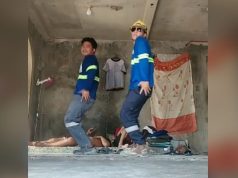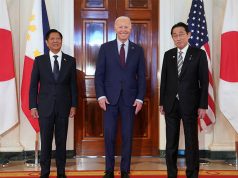MANILA – Senators grilling former transportation and current MRT-3 officials about alleged anomalies in certain contracts on Monday zeroed in as well on the misery visited on the public by the chronic problems of the mass transport system.
Right at the start of the hearing by the public services committee that she chairs, Sen. Grace Poe said “passengers bear with so much misery each time the MRT breaks down; especially when they’ve been queueing up for a long time and are told there will be delays. It’s bad enough that on the road, there’s so much vehicular traffic, but often, because of the MRT breakdowns, some people find it faster to take the bus despite the traffic.”
As the Department of Transportation (DOTr) gave a lengthy explanation of the MRT problems especially the overloading as the coaches have dwindled in number while passengers increased, Minority Leader Franklin Drilon had a simple question for them: “Kelan mawawalan ang pila [When will the queues end]?
Engr. Deo Leo Manalo, MRT-3 director for operations, replied, “ngayon during off-peak, wala nang pila. Pero end of the year, mawawala na ang pila [now, during off peak, there are no lines. But by yearend, the lines will be completely gone].” Officials had said the new coaches bought from China will all be in full harness later this year, easing the perpetual problem of overcrowding.
According to DOTr’s report to the Senate, 20 trains with three coaches each now run during peak hours – which means, 500,000 passengers in all can use the MRT daily.
The MRT also disputed reports that there is a problem with the signalling system of the new trains bought for P3.8 billion from Dalian Locomotive Inc. of China.
Engr. Manalo said testing was completed in April and the signalling system is compatible with the existing trains of MRT 3.
He said they are just fixing a few problems in the communication system, particularly with the feedback.
“The communication for the train computer and ATP equipment is the problem. Dalian is working on it now,” said Manalo.
Dalian trains in June
This June, they will start using the Dalian trains, but not during peak hours. Thus, the daily ridership will remain still at 500,000 until later this year.
By December 2017, however, it is expected that five Dalian trains with four coaches each will be added to the MRT 3, bringing up ridership to 600,000 daily.
By April 2018, this will further rise to 700,000; and in April 2019, to 800,000.
Finger-pointing
Meanwhile, DOTr and the current maintenance provider of MRT-3, the Busan Universal Rail Incorporated or BURI consortium, traded blame over the continuing breakdowns and glitches of MRT 3.
According to BURI, they have been providing services way beyond what their contract requires of them. This is why, BURI added, it had been able to deploy as many as 14-19 trains on average during peak hours in the past year, when the constraints would have limited this number to just 12 trains.
They have also fixed 26 trains that needed repai
And even if the record of past MRT-3 maintenance providers were reviewed, added BURI, one can see that breakdowns and glitches were common.
Atty. Charles Mercado, BURI consortium spokesperson, said “it is unfair to crucify BURI for the MRT’s glitches. All railways have glitches regularly. BURI has attended to glitches, but not to make glitches disappear.”
DOTr said BURI should not compare its work to those of previous maintenance providers, and pointed to what it deemed shortcomings by the contractor..
Atty. Hernando Cabrera, senior technical assistant at DOTr’s office of the undersecretary for railways, pointed out: “Marami ka pa ring glitches; maraming derailment, tatlong derailment…”
Cabrera said there were three derailments in 30 days, followed by a big incident where “umusok ang gulong [smoke was emitted from the tires].”
DOTr also plans to cancel some parts of its contract with BURI, including that which has to do with the signalling system, because it will not be advantageous to government.
BURI also has lapses in the overhaul of the coaches. Cabrera said, “We have not been paying them in full because, as it turns out, not all spare parts are being purchased.”
No matter how good a technician is, if there are no spare parts, it will come to naught, Cabrera pointed out. He said BURI should have improved its procurement planning.
BURI’s Mercado countered that if the consortium had not been buying spare parts, “we would not have been able to restore 26 cars that were not operational. We purchased the necessary parts.”
Abaya blamed
In the end, ex-DOTC Secretary Joseph Emilio Abaya got a big part of the blame.
Senator Poe said the problems of MRT-3 began when DOTC replaced seasoned provider Sumitomo Corp. of Japan, which had maintained the trains for 10 years.
When Abaya joined DOTC in 2012, Sumitomo was taken out and replaced by PH Trams and CB&T as maintenance provider.
Abaya explained it was Sumitomo that declined to continue the job by saying they’d only renew their contract if the fee were increased.
Sumitomo also imposed a condition: it will not guarantee train safety because the trains were “over capacity.”
Abaya asked senators, “what sane secretary [of DOTC] would sign a contract like that?”
Poe, however, wondered aloud why, if Sumitomo needed replacing, a company like PH Trams would be picked as maintenance provider when in fact it was set up just two months before bagging the contract. It was capitalized at a mere P620,000 but bagged a contract worth P54 million a month.
Abaya admitted he did not study well the details of the deal with PH Trams before signing it. His predecessor at DOTC was Mar Roxas, a partymate at the Liberal Party.
“Even if you don’t know the particulars, you approved it?” an incredulous Poe asked Abaya.
To which Abaya replied: “Because there was a presumption that the organization, that the bureaucracy was doing its job. Just imagine ma’am if I came there as a doubting Thomas, being careful that I won’t sign anything, MRT 3 would have stopped on October 19. No maintenance provider, Sumitomo would have packed its bags. That I could not explain to our people.”
While it appeared thaht much of the details of the PH Trams contract were worked out during the watch of Mar Roxas, the senator said she was not yet decided on whether to summon Roxas, wary about people putting a political color to it. Roxas and Poe were rivals for the 2016 presidential elections.
Poe, meanwhile, was intrigued by the recurring appearance of the name of one Marlo dela Cruz in several transactions at DOTC – ranging from PH Trams to BURI. Dela Cruz was said to be an LP ally. Dela Cruz had no track record and yet was winning the biddings.
Poe noted that Abaya had admitted knowing Dela Cruz even before he took over at DOTC. “So that could be one angle. He [dela Cruz] did not appear at today’s hearing–why? It’s sad that some of those involved here before are hiding behind technicalities.”
Abaya, meanwhile, insisted there was no anomaly in the DOTC contract with PH Trams and BURI.
“Garantiya ko po walang kalokohan dito. Walang nakinabang. Above board lahat at malinaw. Kaya kong sagutin ang Panginoon na ginawa namin ito nang maayos [I can guarantee there was no anomaly here. Everything was above board and transparent. I can face God and say we did everything right].”
Click and watch the video report from News5’s Mae Ann Los Banos below:









